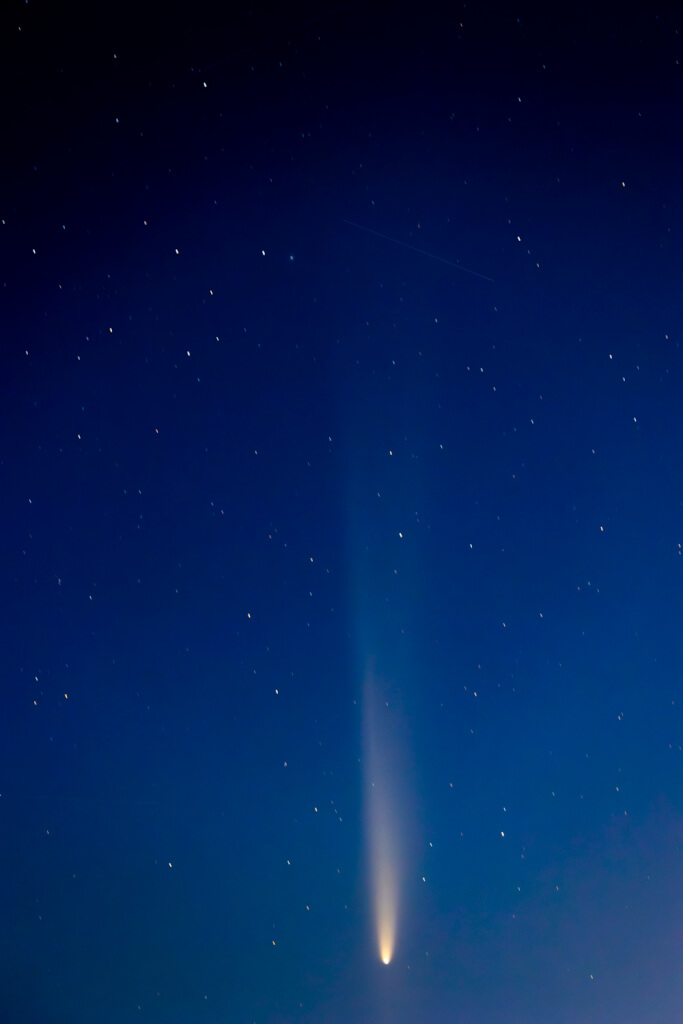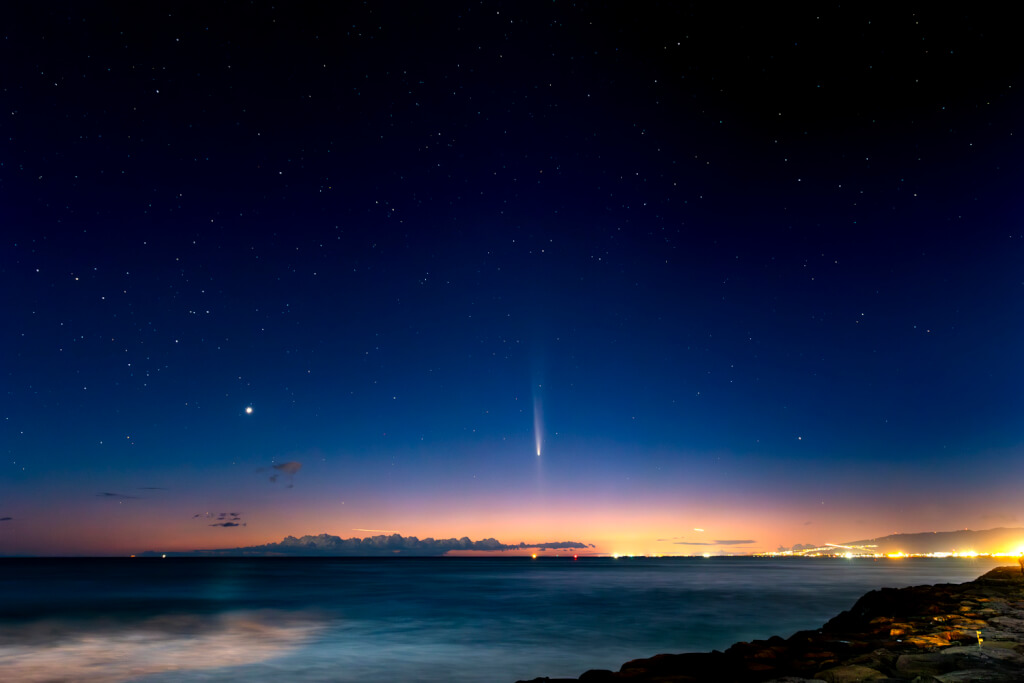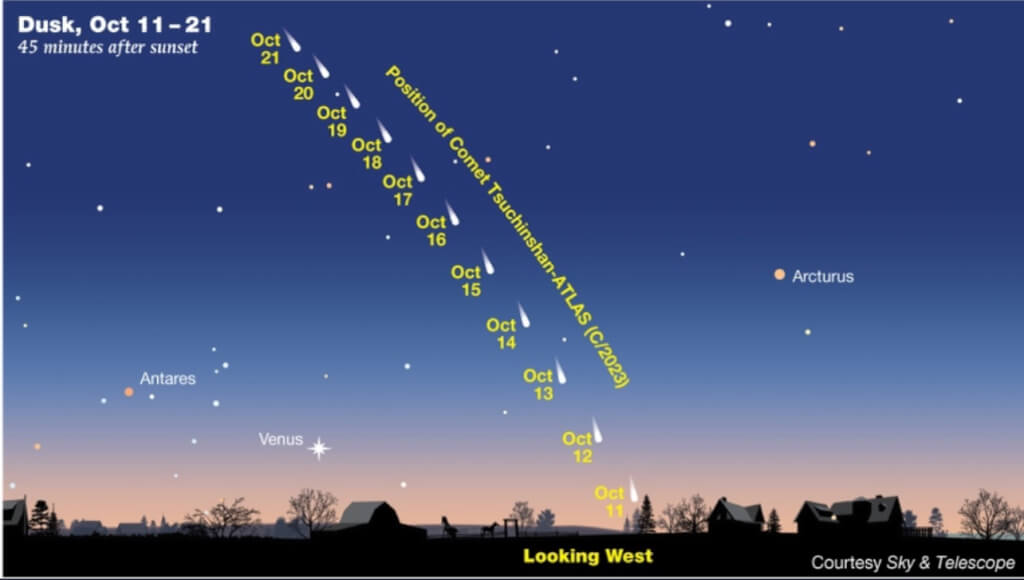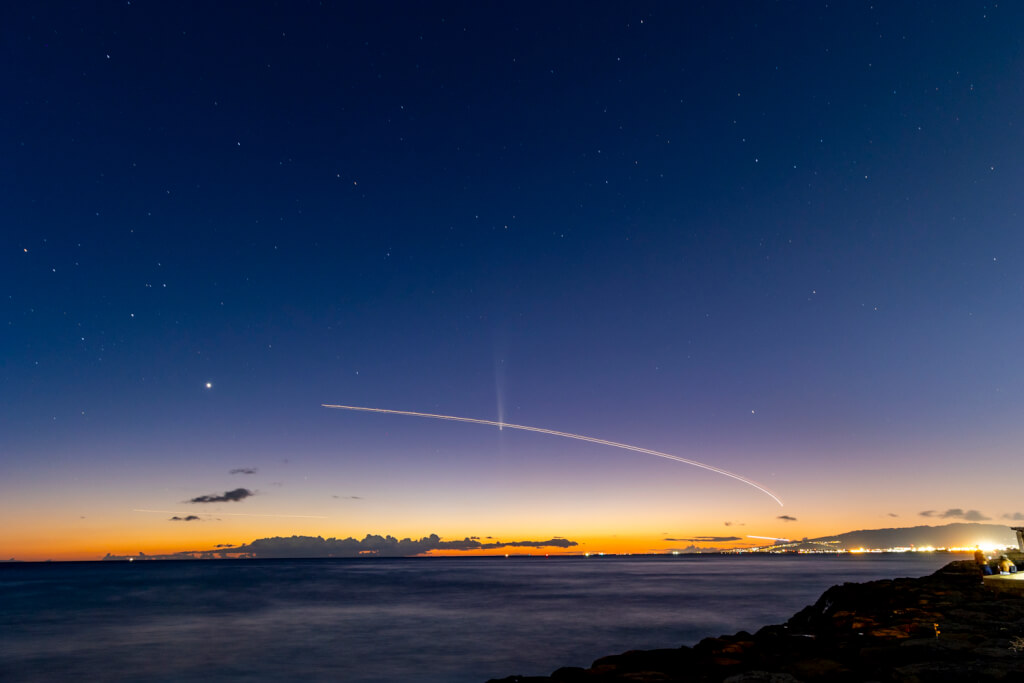If you didn’t already know, we’re currently being treated to a rare and spectacular cosmic treat – a comet! Better yet, unlike earlier this month, you don’t have to wake up at some obscene hour to see it. That all said, let’s go over spotting comet Tsuchinshan-ATLAS here on O’ahu.
There have been only a few comets visible to the naked eye in the past several decades, and of those, only a couple have been visible in the Northern Hemisphere. Those comets included NEOWISE in July 2020 and Hale-Bopp from April 1997 on through the next 18 months. I was a child when Hale-Bopp passed through and was stuck at home during NEOWISE’s visit – remember, this was during the depths of the COVID lockdowns – so I didn’t (or don’t recall) seeing either of these celestial visitors. As such, I wasn’t going to miss the opportunity to see another, and I’m glad I made the effort to see it.
Spotting Comet Tsuchinshan-ATLAS, however, can be a challenge, as, unfortunately, it isn’t nearly as bright as other recent comets. So, today, I’m going to (hopefully) help you if you’re interested in seeing it for yourself.
Spotting Comet Tsuchinshan-ATLAS
As mentioned in the intro, Comet Tsuchinshan-ATLAS was visible in late September/early October. However, back then, you had to get up or stay up into the wee hours of the morning. However, after disappearing for about a week, the comet reappeared in the Northern Hemisphere on October 12, 2024, this time becoming visible during early twilight hours. Specifically, the comet becomes visible a bit above, where the sun dips below the horizon roughly 45 minutes after sunset.
Since Comet Tsuchinshan-ATLAS doesn’t rise too far into the sky, it’s best to head to a spot from which you can see the horizon and the setting sun. Here on O’ahu, there are quite a few convenient vantage spots available to you. These spots include:
- Most of Waikiki Beach
- Magic Island/Ala Moana Beach Park
- Kaka’ako Waterfront Park
- Daniel K. Inouye International Airport
- White Plains
- Ko Olina
- Kahe Point and virtually all of the Leeward Coast
- Waialua
- Haleiwa
- Pupukea
- Kawela Bay
The above isn’t an exhaustive list, but it is several well-known spots for you to consider. For my purposes, I didn’t want to drive too far, so I headed to Kaka’ako Beach Park on October 13, 2024. On that day, the comet became visible around 7:50 pm HST and was high enough above the horizon to avoid the clouds that were gathered on it.
That said, the comet doesn’t become instantly visible. Rather, it slowly appears, first as a barely visible apparition and then as a ghostly, faint streak in the sky. Yes, even when it’s visible, it’s barely so. To make it easier to see, it’s best to capture a photo of it using your smartphone or camera. If using a traditional camera, you’ll want to use a tripod, as long exposures are required. For example, the above photo is a 15-second exposure. It’s also heavily Photoshopped to better accentuate the comet itself. And, yes, that is Venus to the left of the comet in my photo.
At any rate, the comet remains visible for roughly 30 to 45 minutes before it dips below the horizon. It’s also worth noting that as time marches on, the comet will continue to get dimmer, though it will also appear higher in the sky before disappearing completely by the end of the month. So, if you haven’t already gotten to see it yet, you may want to head out SOON.
Final Thoughts
I know what you all want to know—which of the spots I mentioned are the best places to see Comet Tsuchinshan-ATLAS? Well, while Kaka’ako Park was convenient, the light pollution in the area does make the comet harder to see. In other words, you’ll likely get a better view of it from somewhere darker. Moreover, traffic from HNL kept interfering with my exposure. Here’s an example of that.
This is an issue that could impact viewings from Ko Olina, too. As such, it’s my recommendation to pick a spot on the Leeward Coast or North Shore if you want the best viewing experience. However, if you need a more convenient spot, then any of those I recommend will work. Just be aware that light pollution and aircraft may make it more difficult to see and take photos of Comet Tsuchinshan-ATLAS.




